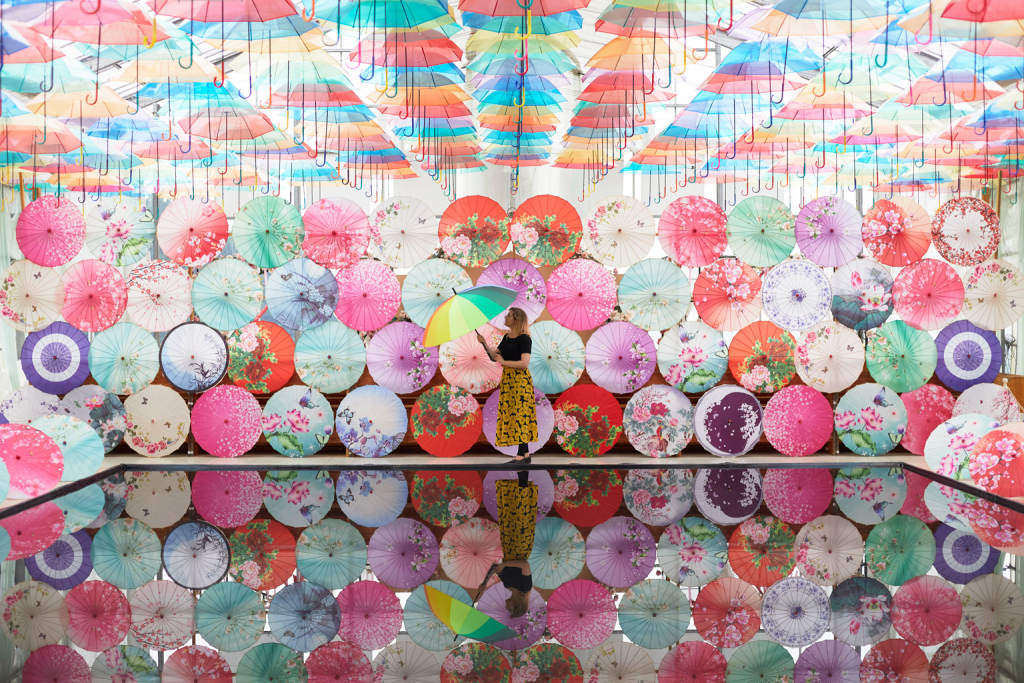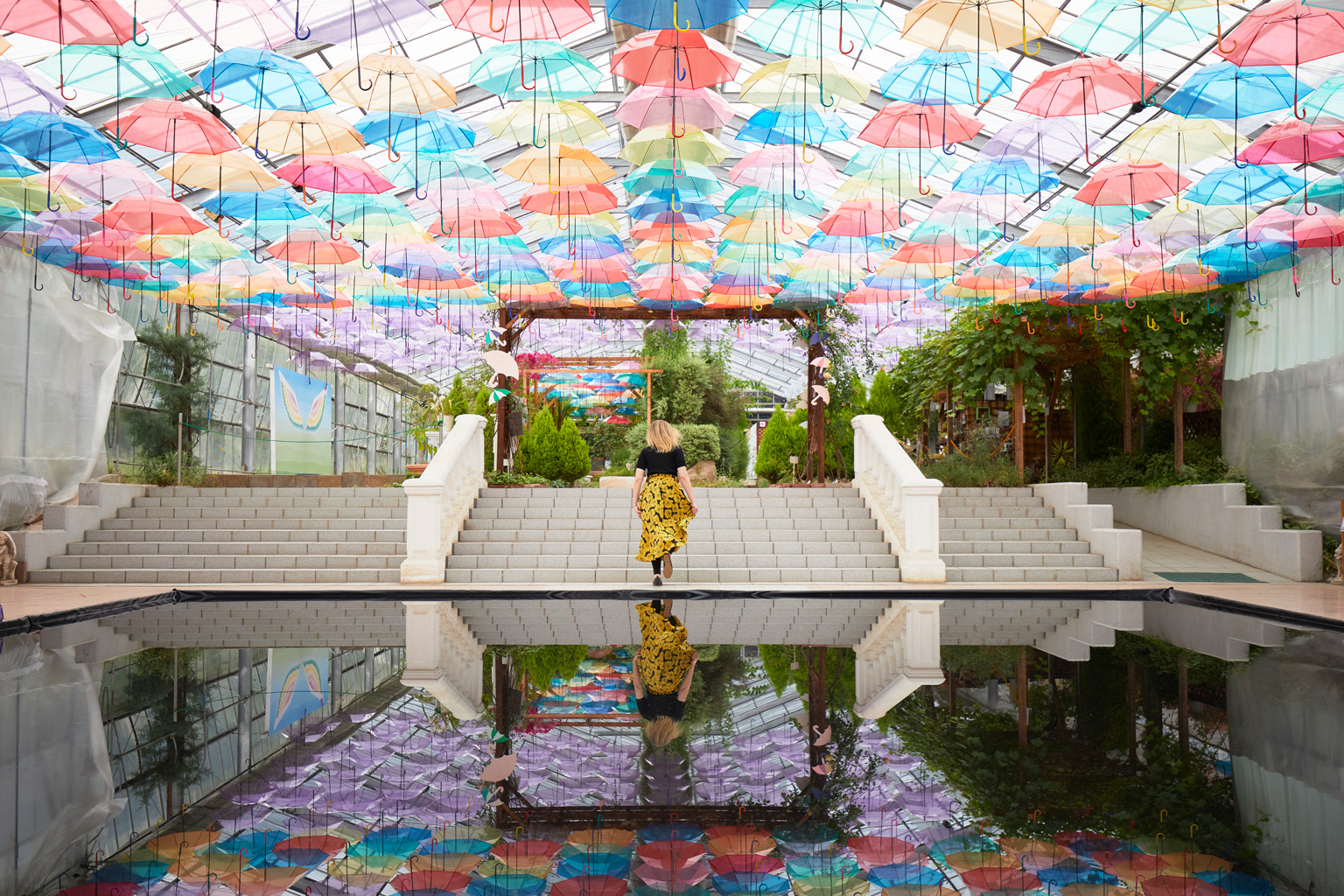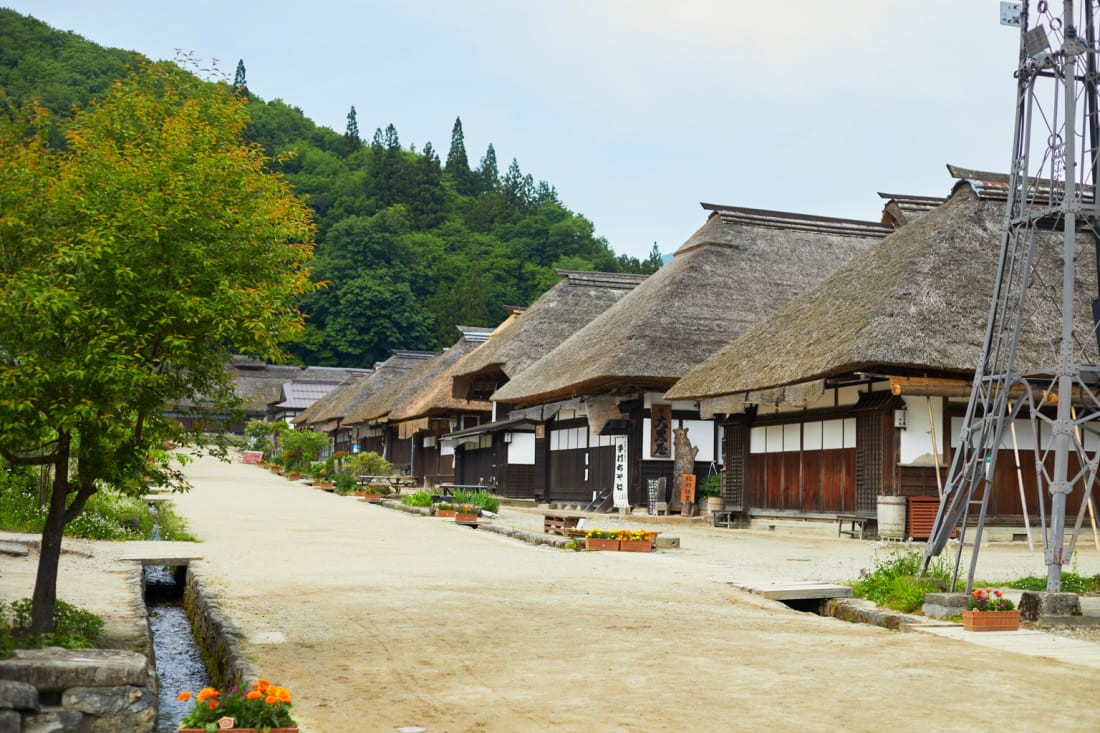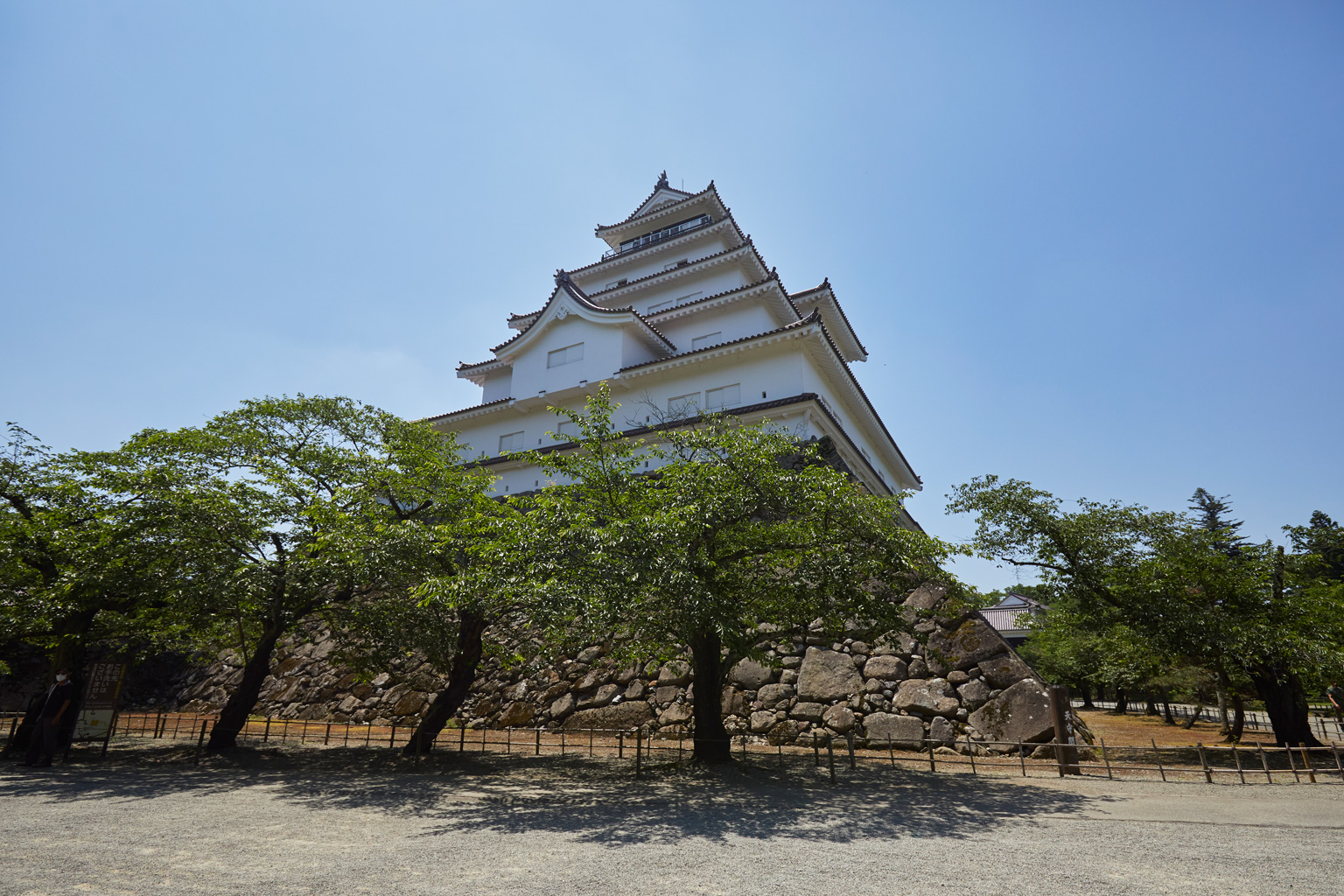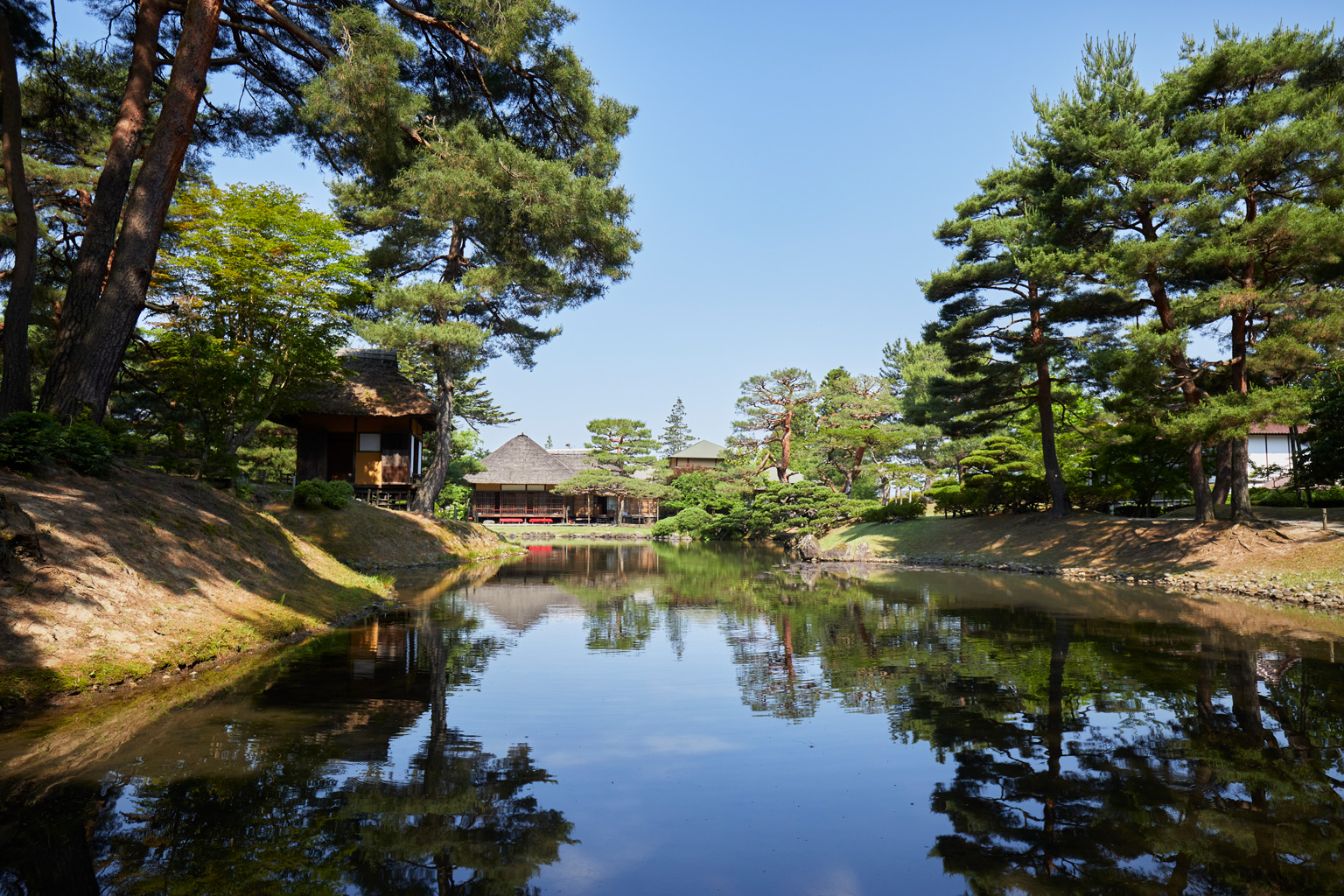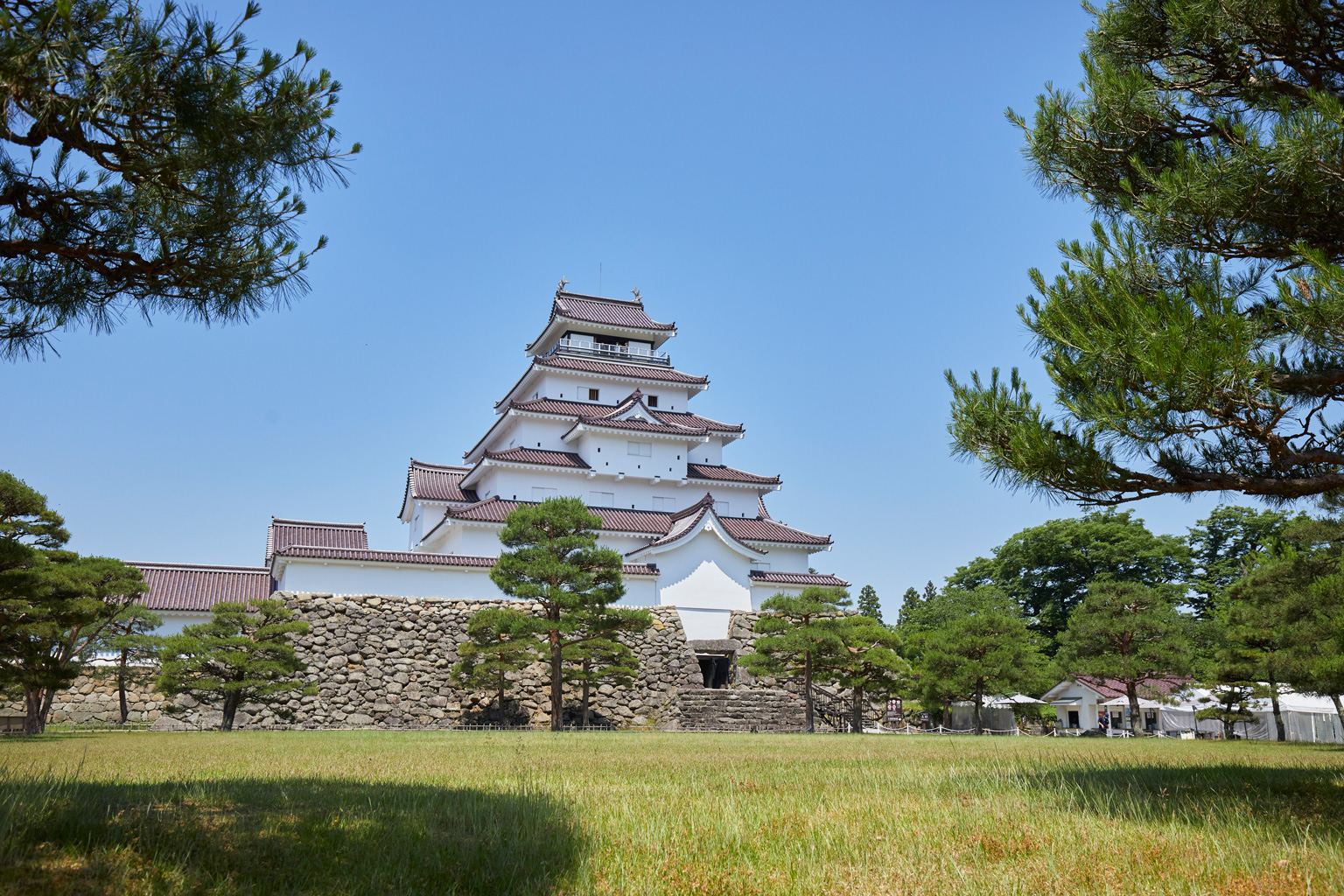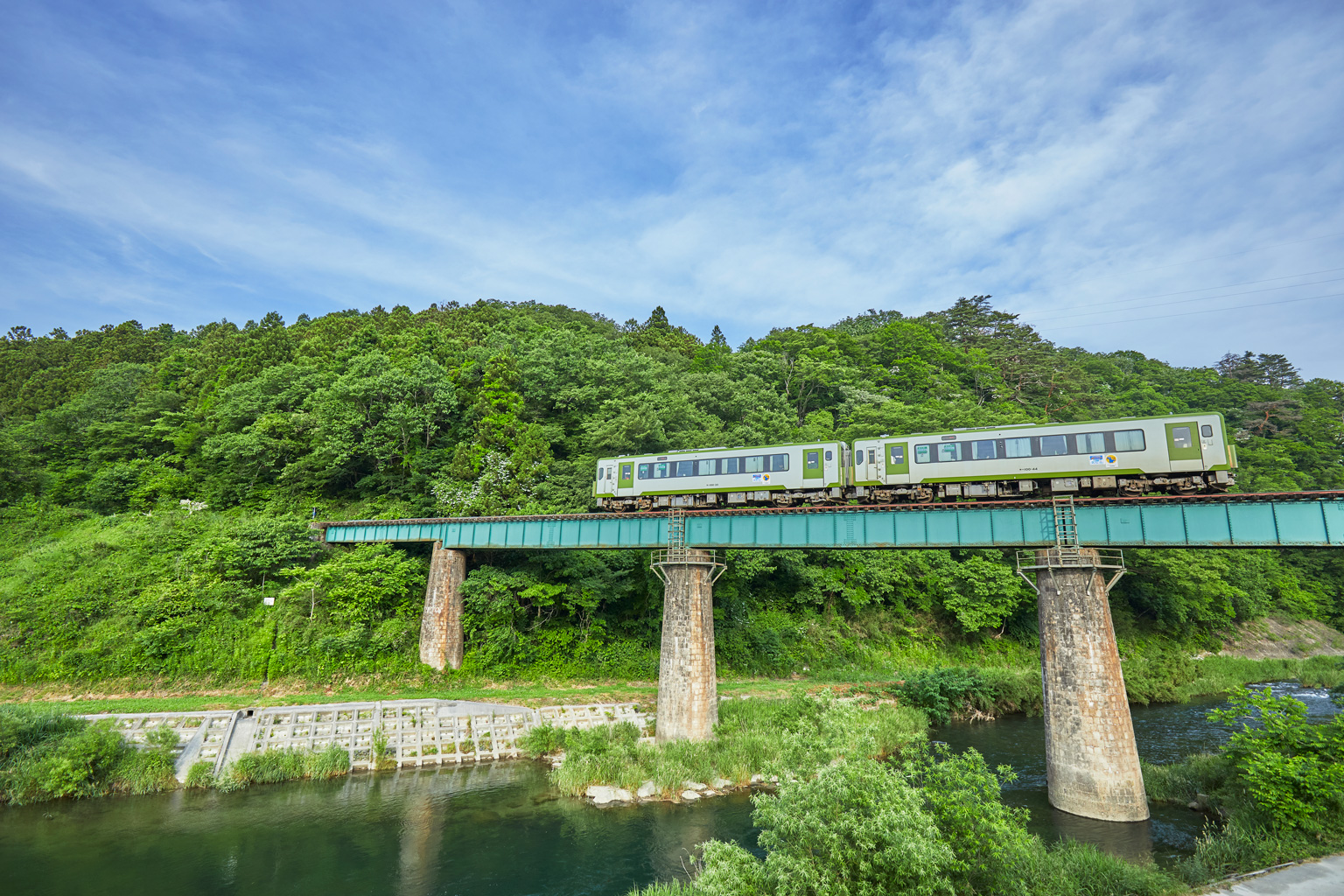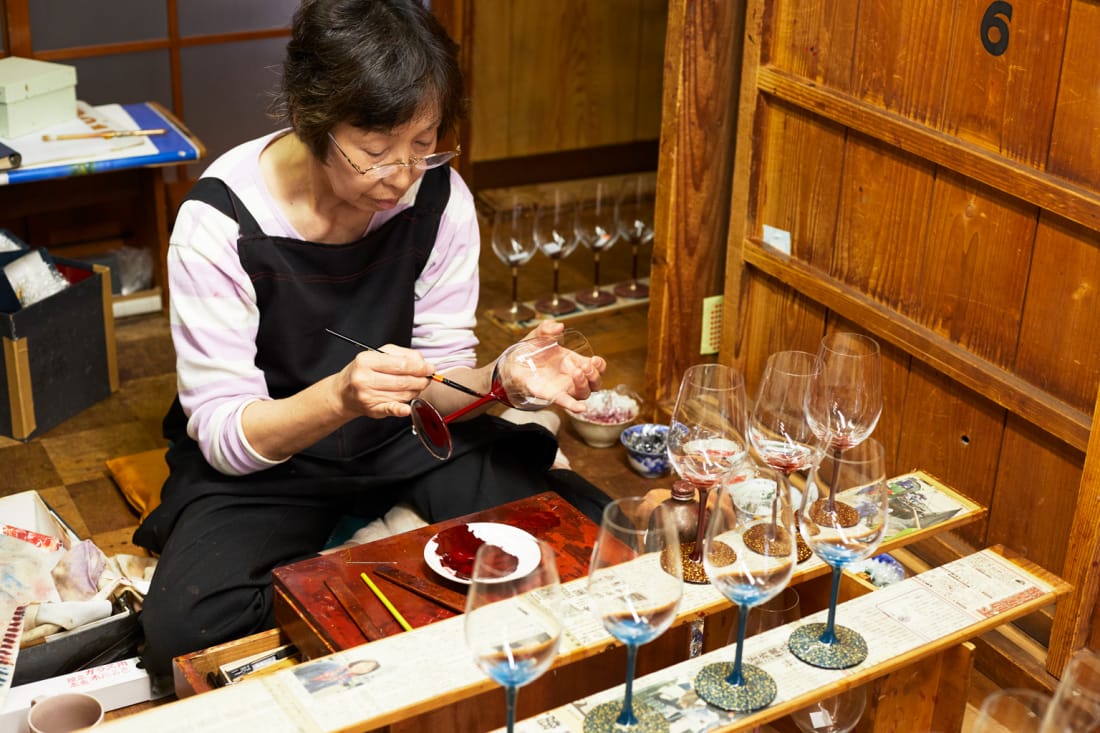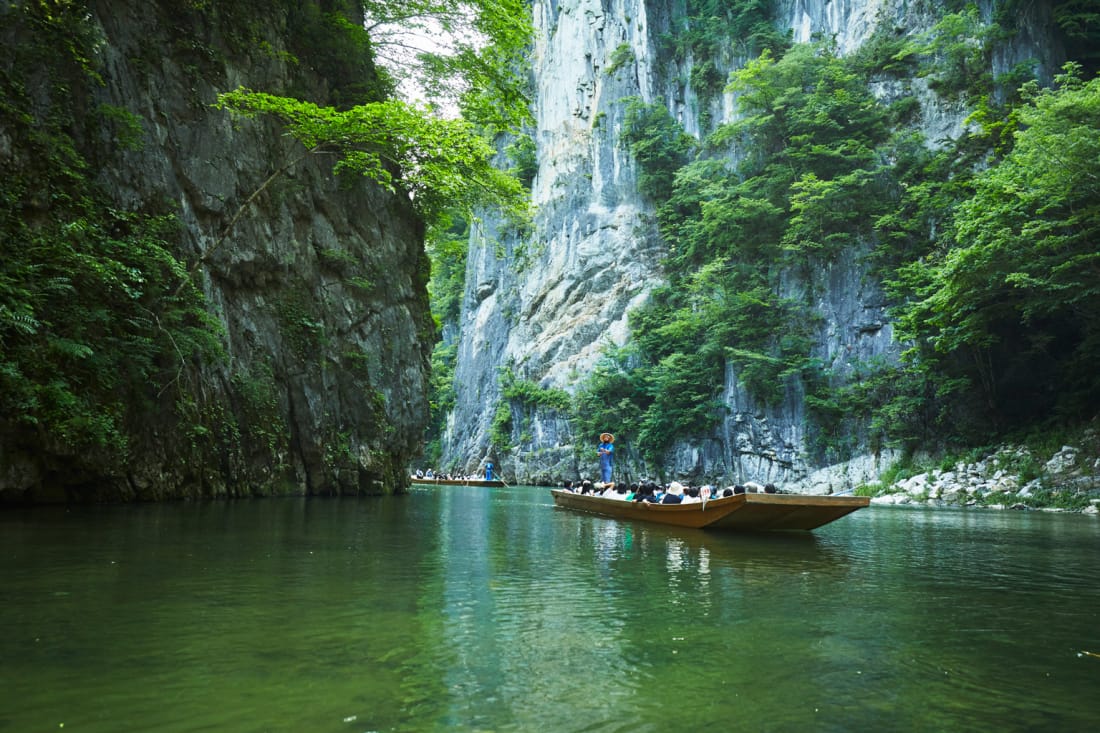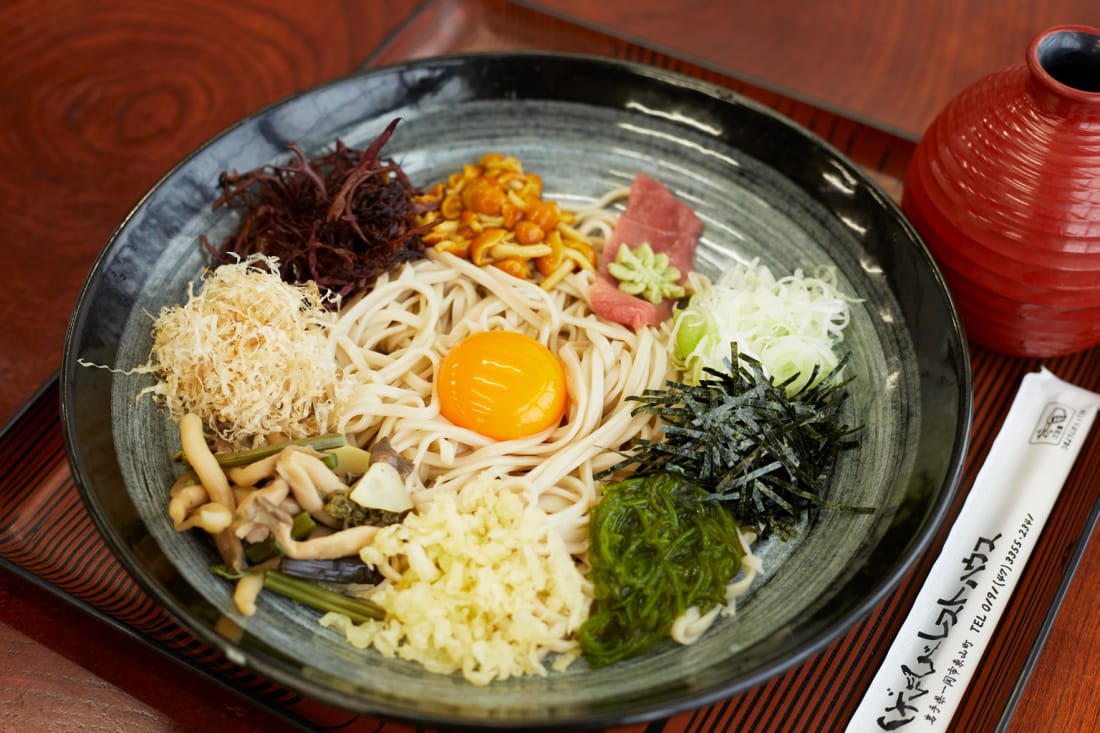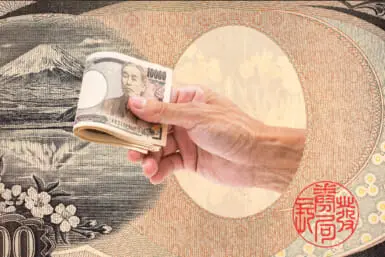Iwate and Fukushima are Tohoku’s two largest prefectures and offer innumerable opportunities for exploring vast natural environments and the crafts that artisans have made from their resources. Both regions have rich historic and unique cultural settings that are waiting to be explored.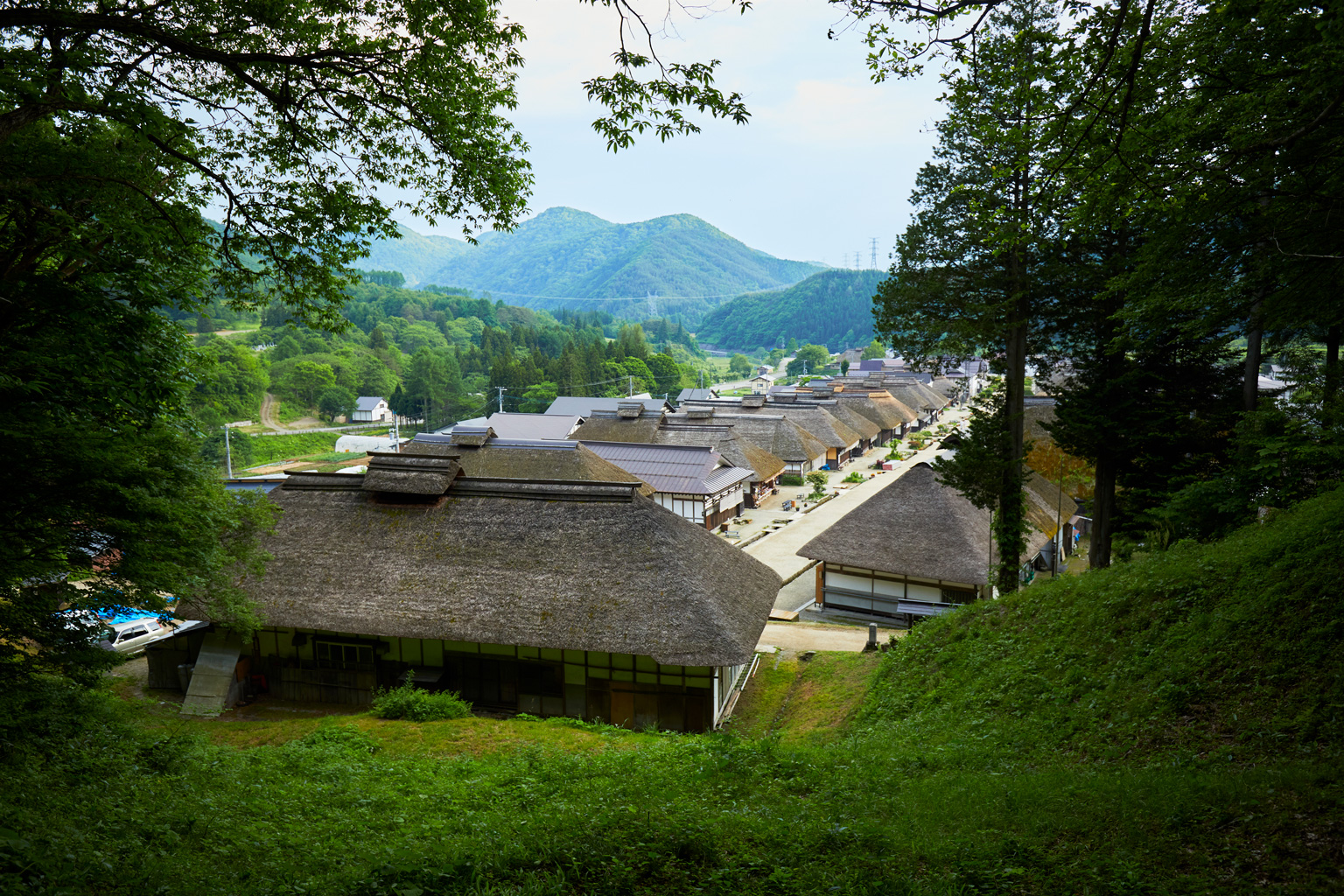
Fukushima
Fukushima is a major agricultural center. Famed for its juicy peaches, grapes and countless other fruits and vegetables, this prefecture was made for hearty indulgence. Enjoy some of the region’s exquisite sake from one or several of its breweries while exploring this vast land of significant samurai history.
Inawashiro Herb Garden
Listel Hotel Inawashiro is a prime location for exploring the Bandai and Urabandai regions of Fukushima, and is just 40 minutes away from castle town Aizu-Wakamatsu. Winter visitors can enjoy six slopes — including an official FIS mogul course — as well as hot springs, all on hotel grounds. Inawashiro Herb Garden, which spans a generous 100,000m2 of the resort’s grounds is a fantastic place to enjoy a curated version of the great outdoors. It has an impressive 500 varieties of herbs and flowers including poppies, lavender, sunflowers, kochia, cosmos and more. Check the website to see which types are in season, and when flower picking programs are in session (extra fee required). The greenhouse serves as a wedding venue and also hosts a small herb shop with plants and seeds that may be hard to get elsewhere. The building’s latest attraction, the photogenic “Umbrella Sky” is the perfect place to pose for enviable social media pictures.
Note: At the time of writing, Inawashiro Herb Garden is operating under irregular business hours. Note that they are closed in winter. For up-to-date opening days and times, check their Twitter account.
Top Tip: The walk from JR Kawageta Station to Inawashiro Herb Garden takes about 15 minutes. Follow the beautiful cherry tree-lined riverbank — especially beautiful in spring — for a leisurely stroll on the way there. From the right location, you can even get some incredible shots of Mount Bandai from here.
Ouchi-juku
Ouchi-juku was a flourishing post town on the Shimono Kaido route between Aizu-Wakamatsu and Nikko during the Edo Period (1603-1868). Since then, it hasn’t changed much. The main approach is free of electrical wires and streetlights and many of the houses still have thatched roofs that have survived thanks to the dedicated maintenance by locals. Several villagers attend roof maintenance meetings to ensure the skills are preserved for the future.
For visitors, Ouchi-juku is best enjoyed at a leisurely pace. Take a stroll up the hill to get a full overview of the main approach, browse the shops touting their wares, learn a local craft and grab a bite to eat. There are about a dozen restaurants, most of them serving soba. Look out for negi soba, the local specialty where you use a spring onion to scoop up the buckwheat noodles. If sweets are more your thing, head to Bunke Tamaya, for some melt-in-the-mouth Swiss roll cake and other treats.
Note: Many of the shops close early (between 3 to 5pm), especially during the off-season.
Top Tip: To make the most of your visit here, book a stay at one of the three minshuku in the village. You’ll be met with good old fashioned rural hospitality and can get to know more about locals’ lives over dinner and drinks. Minshuku Iseya has an English-language version of its website and is also active on Instagram. Honke Ougiya doesn’t have an English page, but does boast the charismatic Kiko Obaya as your host inside a 300-year-old kura storage house (and it has wifi). Yamagataya is, at the time of writing, not currently taking reservations.
Aizu-Wakamatsu: Samurai City
One of the battlegrounds during Japan’s Boshin Civil War in 1868, Aizu-Wakamatsu’s samurai history runs deep. The former Aizu Domain was powerful and highly skilled in martial arts, boasting a standing army of 5,000 men. There are several nods to the Aizu-Wakamatsu’s samurai past — and the mercantile prosperity — across the city. Visit Aizu Bukeyashiki and Aizu Clan Nisshinkan School for more in-depth insights into samurai life in the Edo Period.
Oyakuen Garden
Not many places can boast having a medicinal herb garden in the center of the city. Oyakuen started as a holiday villa for the Ashina family during the Muromachi Period (1336-1573). By the mid-17th century, the property was developed into a herb garden. Here, important research on plants and their uses was conducted to help treat illnesses and prevent epidemics in the Aizu Domain. Common people were also encouraged to grow herbs here as well.
In 1932, Oyakuen was designated a National Place of Scenic Beauty for its exquisite design and historic significance. These days, the garden is open to visitors and offers a tranquil spot to sit and enjoy the view over the pond, or to stroll around and explore. There are about 400 types of herbs grown here now, and the garden hosts herbal tea making experiences as well as matcha tea ceremony events (reservations required for both).
Top Tip: Be sure to visit the garden shop, which displays traditional garden tools and other items and sell several types of tea as well as local crafts.
Tsuruga Castle
About a 20-minute walk from Oyakuen stands one of Aizu-Wakamatsu’s most recognizable symbols, Tsuruga Castle. It was first built in 1384 and destroyed after the Boshin Civil War in 1868. The castle was reconstructed in 1965 and most recently renovated in 2011, when the roof was changed to its current red tiles, reproducing the look of a 17th century castle. Climbing to the top gives you a great view of the city, but the castle grounds themselves are a destination in themselves. The castle park is famous for its cherry blossoms, but if you can’t make it here in spring, simply try a sakura soft serve ice-cream at one of the cafes here.
Top Tip: Drop by around 10am or 3pm to hear the haunting chime blaring the folk song “Kojo no Tsuki (Moon over Ruined Castle)”, which was inspired by both Tsuruga Castle and Aoba Castle in Miyagi Prefecture.
Iwate
Iwate is listed 10th in a ranking of prefectures people are least likely to visit. Despite it being just over 2 hours away by Shinkansen, many people think of it as further away than it is. Which isn’t surprising, when you consider it’s Japan’s second largest prefecture (after Hokkaido) and yet one of its least densely populated. For those seeking a balance of untamed nature and the harnessing of its powers to make beautiful things, then Iwate may be just the ticket.
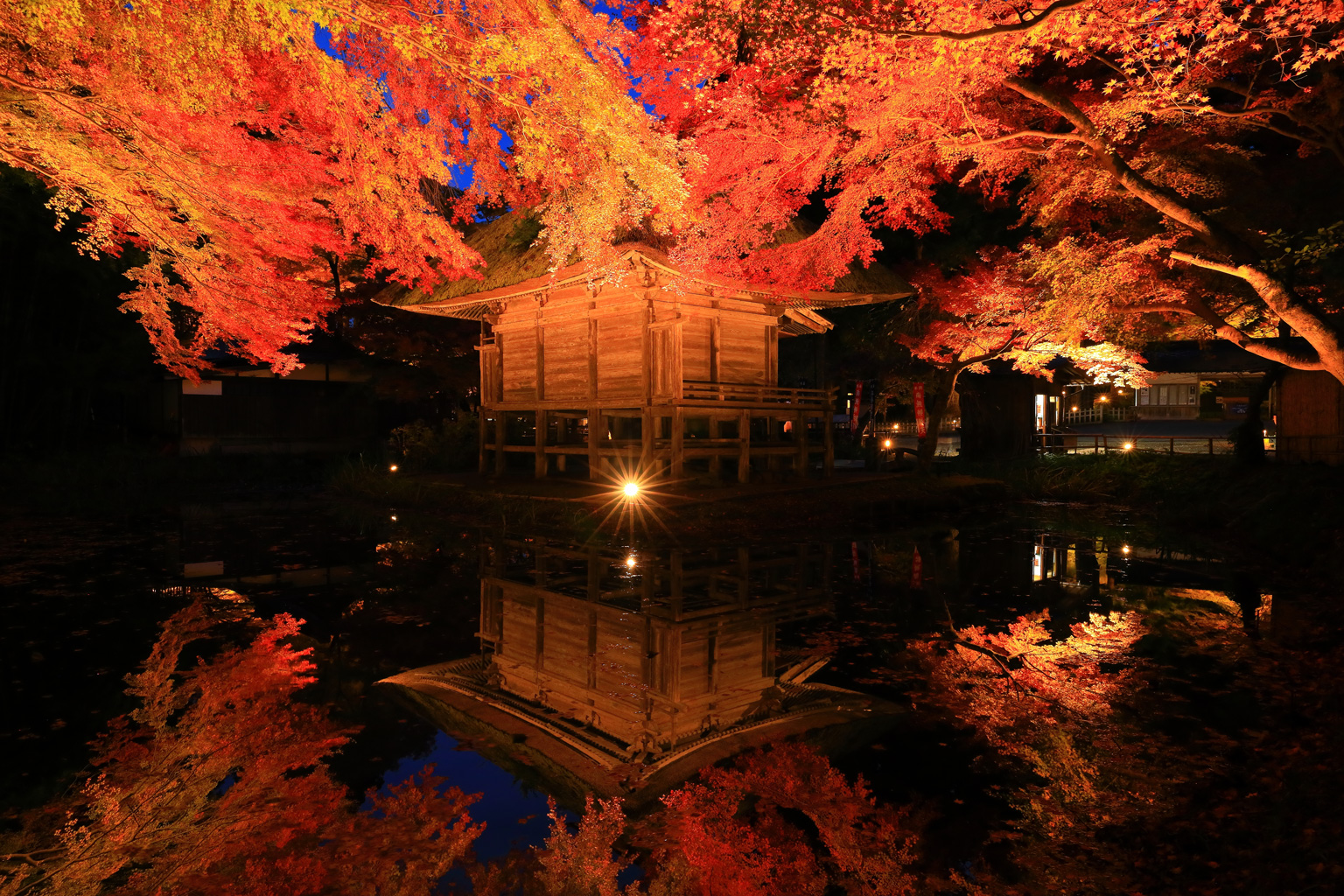
Photo by yspbqh14 via Shutterstock
Hiraizumi
Hiraizumi was listed as a World Heritage Site in 2011 for its many temples, gardens and other structures of archeological significance. A visit here is like walking through a living museum. Much of its splendor hails from its glory as a Heian Period (794-1185) northern hub for the Fujiwara family and this historical prominence is still visible today. Hiraizumi’s Chuson-ji Temple is possibly the most famous of the town’s temples and was first founded in 850 by Ennin, who also founded Zuiganji in Matsushima, Miyagi Prefecture. The temple’s golden hall Konjikido, is unique in its opulence. It was completed in 1124 and it is the only one of Chuson-ji Temple’s structures to survive in its original form. Both its exterior and interior are covered in gold leaf (essentially everywhere except the roof) and taking photos is prohibited — this is one of those places you must see in person. Other notable destinations include the Muryoko-in Ato, a representative work of Jodo gardens, and Takkoku no Iwaya, a temple partially built into a cliff face.
Top Tip: Pick up a bilingual handwritten map made by JR Ichinoseki Station staff for their best picks of the area. Ask for it at JR Ichinoseki Station’s west ticket gate.
Hidehira Nuri
There would be no Hiraizumi without Hidehira nuri, the lacquerware connected to the area. Originating during the Heian Period (794-1185), Hidehira nuri uses locally sourced gold leaf to create bold, vivid patterns and designs. Marusan Shikki, in Surisawa (just outside of Hiraizumi), prides itself on being continuously innovative, while honoring the historic traditions of Hidehira nuri. One of their most popular items, the Mount Fuji champagne glass, fuses modern design and tableware with lacquerware craft and has earned them several awards. Visitors can create their own version of a lacquerware champagne glass through one of the company’s painting workshops. Choose from one of the many traditional designs for inspiration, or create one of your own. Visitors taking part in the experience can also take a guided tour of the workshop to see artisans at work onsite.
Top Tip: Items are also available for purchase at the workshop or via the Marusan Shikki’s online store.
Note: Reservations for experiences should be made at least one week in advance. The lacquer takes about one week to dry so your item will arrive between 2-3 weeks later, by post.
Geibikei
Geibikei, also known as Geibi Gorge, has been a popular tourist destination for over 100 years. Boatmen steer long wooden boats through the shallow waters of the gorge, explaining natural rock formations on both sides of the two-kilometer stretch of soaring limestone walls of this natural monument. The boat stops at one end and lets everyone off so they can stretch their legs and try their luck at Daigeibi-gan, a giant cliff nearby. Visitors can buy clay balls (called undama) with kanji character inscriptions symbolizing good luck, health, or love and hurl them at a hole in the cliff. Should your clay ball enter the hole, your wish is likely to come true. Once you’ve boarded again, the boatmen will serenade you with a song called “Geibi Oiwake”, as they guide you back to the boat center.
Top Tip: Grab lunch at Geibi Resthouse either before or after your trip for some fine local fare. The Geibi soba and udon set offers a rich variety of locally sourced mountain vegetables to go with the noodles.
Fukushima and Iwate: How to Get Here
The JR East Pass (Tohoku area) will get you to and around both Fukushima and Iwate prefectures with ease. Seat reservations are generally not necessary. However, you can reserve a seat on Shinkansen and limited express trains at no additional fee — with the exception of Green Cars and GranClass trains, both of which require an extra fee.
Note: The tourist facilities, restaurants, etc. mentioned may be subject to sudden closures or changes in business hours. Please check the relevant websites for updates before your departure.
Where would you like to go first? Not sure how to plan your trip yet? Check out JAPAN RAIL CAFE TOKYO for great advice and more information.
Sponsored Post

